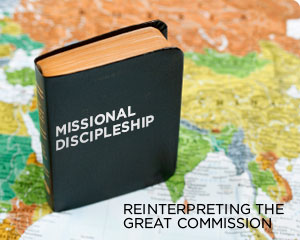Psalm 37:4 reads: “Delight yourself in the Lord and he will give you the desires of your heart.” You want to be married, you want a better job, you want to use your creative gifts, you want better health, you want people to like you. What’s wrong with all those desires? Why isn’t God keeping up his end of the promise? Probably because these are man-centered preferences not God-centered desires. It’s critical that we make the distinction between “preferences of the heart†and “desires of the heart.†Preferences are self-entitlements. Desires, in Psalm 37, come from God.
For the sake of the Gospel, many people are called to lay down “the preferences of their hearts†in order to cultivate a heart that desires God’s greater mission. If we love God first, we may find ourselves doing what we want, not second or third, but fourth or fifth. In my church, we have well-educated entrepreneurs setting up chairs, husbands serving in Kids ministry, people helping with media who aren’t “media geeksâ€, people running PowerPoint who could be leading worship. We also have some people serving in their natural gifts and strengths.
Using Gifts for the Mission
In the missional church, there should always be seasons of sacrifice and re-alignment of our hearts desires through serving in areas that we are not “comfortable.†Gifting and calling doesn’t lead to comfort but it does lead to joy. As small churches and missional churches grow, people will be able to move into places where they have gifts. This will bless and strengthen the community and mission of the church. It will allow the diverse body to be unified in the mission of Christ, pushing the gospel into a harmonious community that brings the sound of the gospel into every domain of the city. However, if they move into these natural places without the heart of a servant, then they can end up sabotaging the mission through “burn outâ€, or hurting the church through a demanding heart.
Our service stands and falls in the heart, where the gospel must be applied daily so that we can love God first and then do what our heart desires. The challenges is to so truly love God first that, for a season, you may serve out of sacrifice and the “gift of the gospel†than out of your heart’s preferences. In fact, your gifting will inevitably taking into the heart of suffering. Was Jesus “gifted to be the messiahâ€? Absolutely. Did it remove discomfort, inconvenience, and suffering? Quite the opposite. The further we move into God’s calling, through obedience and mission, we will discover there is a discomfort in discipleship that must be embraced. It will be embraced, even enjoyed when we have put aside preferences for desires. Not all our natural, even good desires are fulfilled this side of the new creation. Remember the condition on this promise: “delight yourself in the Lord…” What you will find is that the deeper you delight in him, the more your desires will change. This change will include a valuing of Gods mission that runs so deep in our hearts, it will displace former desires. Despite the cost, it comes a profound, deep joy of serving in the strength that God supplies so that in all things Jesus Christ may be magnified (1 Peter 4:11).

